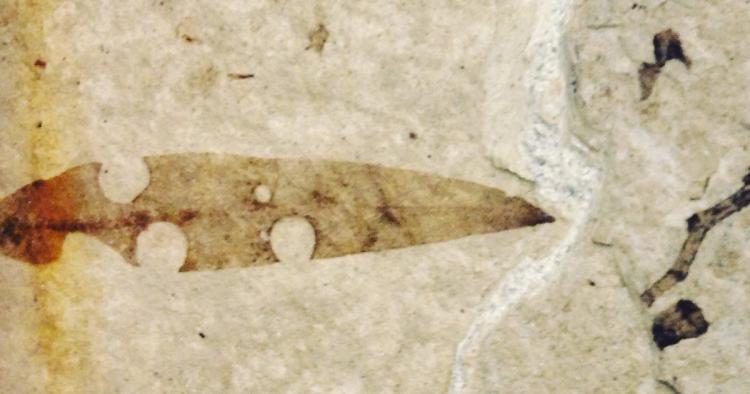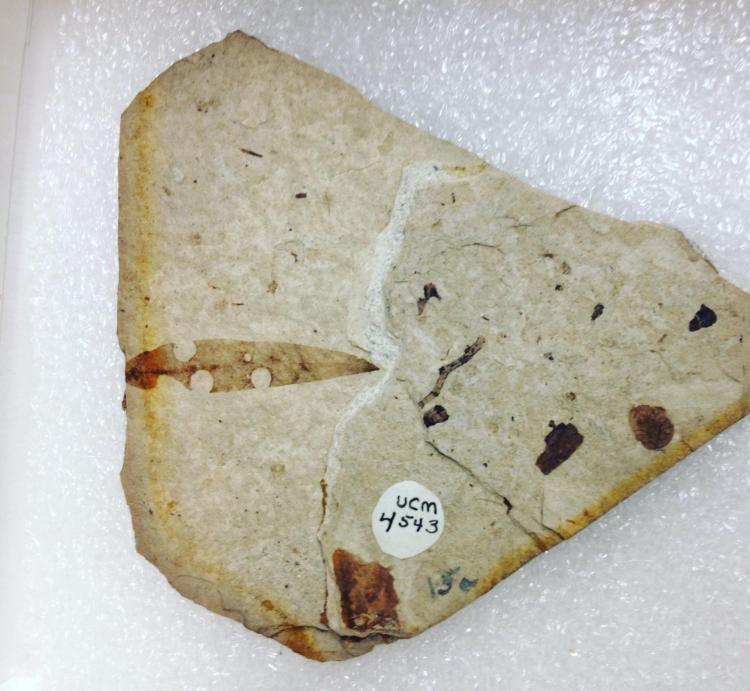

TDA Cockerell, an entomologist at the University of Colorado who specialized in bees, was also an avid fossil collector and was the first to discover and describe many of the fossil insect from Florissant. Cockerell had noticed damage on fossil leaves collected from what we now know as Florissant (west of Colorado Springs) that was consistent with damage produced by modern leaf-cutting bees. These bees cut and collect circular-shaped pieces of leaves and use them to build nest plugs for their larvae. You can find leaf-cutting bees today in Colorado and if you look closely you might see the remains of their leaf-cutting behavior on plants in your backyard—especially rose and lilac.
Cockerell and his students from CU spent several summers in Florissant in the early 1900s collecting and documenting the fossil insects and plants from the Florissant paper shales. After several years of seeing only leaf-cutting bee damage on fossil leaves, Cockerell finally found the first body fossil of a leaf-cutting bee and was able to demonstrate that the damage on the leaves was in fact produced by these bees. He described and published the bee specimen, named Megachile praedicta, in 1908. Subsequently, two of his students, J. Terry Duce and Willard Rusk, found this remarkable fossil leaf with classic leaf-cutting bee damage. This specimen was published a follow up note in Nature in 1910 documenting leaf-cutting bee behavior in the fossil record.
Catalog Number: UCM 4543
Taxonomy: Megachilidae
Location: Florissant, Colorado
Age: Eocene
Stratigraphy: Miocene Shales
See All Wonders of the Week!
T. D. A. Cockerell. 1908. A fossil leaf-cutting bee. The Canadian Entomologist 40:31-32
